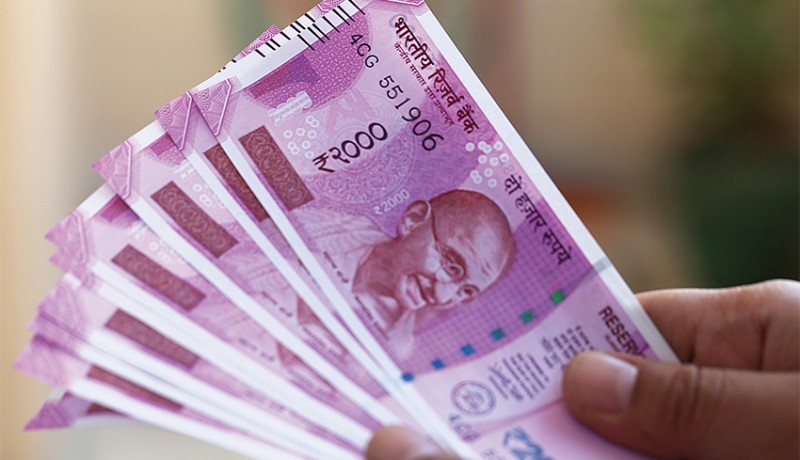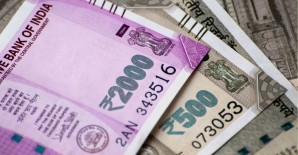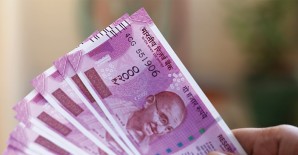
Money

Demonetisation may be a timely move but silvers are bearing the brunt, says Priya Desai.
Sending old notes of ₹ 500 and ₹ 1,000 denomination out of circulation is like sending silvers on vanaprasthashram (a forest retreat), mentioned one of my silver friends in jest recently. Sarcasm apart, his remark was the outcome of his frustration. The local grocer, he said, was unwilling to accept a ₹ 2,000 note and return the change. He was also upset with the serpentine queues at the bank. My 74 year-old friend is unable to stand the rigours of demonetisation. He is unaware of e-wallets and other virtual payment options. What is he supposed to do?
Our very own 9/11
This isn’t a one-off occurrence; it has become a common story since 9 November 2016 when demonetisation came into effect, making old notes of ₹ 500 and ₹ 1,000 illegal tender. On the day Donald Trump was declared America’s president-elect, shocking people around the world, our very own Prime Minister Narendra Modi made a bold announcement on demonetisation. Needless to say, it was a bolt from the blue.
He announced that the objective was to rout black money and terror funding. The country was awash with mixed emotions, but most looked upon the move as a favourable one; it was hailed as path-breaking in the democratic world. As this ‘surgical strike’ unfolded over the weeks, its weak execution and messy implementation has become the hot topic of debate across various demographics.
People from all strata of society have been hit badly; the move has generated undercurrents the Modi Government had not foreseen. Initially, the public did not grasp the real meaning of demonetisation and had no clue about the hard days that awaited them.
Demonetisation decoded
Demonetisation is a radical monetary measure—a step that simply puts an end to circulation of a currency unit or units by declaring them to be ‘not a legal tender’. It means the particular currency will not be accepted as a payment from the time it is banned.
The announcement on the night of 8 November unleashed shock, disbelief, worry, disconcertion, indignation and even fear across the country. As mentioned earlier, the avowed objective of such a prodigious experiment that involved replacing 86 per cent of the cash in circulation was to curb black money and terror funding. But over the past few weeks, the Government’s narrative has changed with a heavy push being given to the concept of a cashless economy (sometimes dubbed as less-cash economy). The Government is propagating the use of electronic and other payment methods that obviate the need to use cash.
When the announcement was made, the Government also released comprehensive information on how and where the ₹ 500 and ₹ 1,000 notes could be exchanged or deposited, and a deadline was set for this as well. On the face of it, this exercise looked simple and straightforward enough; however, the daunting experiences that people are going through are a far cry from what was portrayed in the government announcement. Long-winding queues, unavailability of sufficient cash for withdrawal, and empty or out-of-order ATMs seem to be the order of the day in cities and towns across the country.
Hardships galore
The sections of society that have felt the biggest brunt of demonetisation are the silvers, the disabled, daily wage earners and an unaccountable number of people in the unorganised sector of our economy. Silvers find it extremely difficult to stand in queues for hours. What adds to their woes is that most banks have also set a highly truncated daily withdrawal limit versus the ₹ 24,000 limit set for weekly withdrawals. If they choose to use an ATM instead (provided cash is available), the withdrawal limit is ₹ 2,000. This compels them to go through the same routine every single time they withdraw money. Adding fuel to the fire is the fact that even when the ATMs decide to be generous and spew money, the only notes they dispense are in the ₹ 2,000 denomination. Trying to get the local provision store, domestic help and the milk, bread and vegetable vendors or medical stores to accept these notes is the next insurmountable task facing them.
The situation has now reached a point where silvers are unable to conveniently buy their basic medicines and provisions; this amounts to nothing less than harassment.
Far-reaching impact
There is no doubt that such radical measures have evident and immediate side-effects. However, there are bound to be certain medium-term effects, too, that vary for different sectors of the economy and different sections of the population. Silvers are one such group that will take a significant financial hit, both in the short and medium-term. Let’s see how it affects them adversely:
- Income: A recent trend is declining interest rates on fixed deposits, a major investment avenue for silvers to earn fixed income. This trend will accelerate in the short and medium-term, making a sizeable dent in seniors’ income flow. This will be owing to the availability of additional liquidity for banks, and the Reserve Bank of India’s policy of reducing the repo rate. The bank FD rates have been reduced to 7.45 per cent per annum.
- Stock prices and mutual fund (MF) NAVs: Silvers have been experimenting with asset allocation wherein they invest in stocks and MFs. In the post-demonetisation period, there has been an increase in uncertainty in the financial world and the economy in general. This has led to volatility in the stock market, and no one can hazard a guess as to how long it will continue. Overall, there has been a decline in the economic growth rate. Keeping in view the adverse impact of demonetisation and the resultant economic disruptions in various industries, there is no ruling out a further dip in the growth of the economy. For investors, this translates into lower dividends, both on stocks and mutual funds. This has a direct impact on silvers’ income flow in the forthcoming year, making it a double whammy for them.
- Bonds: Many seniors invest in a variety of bonds for a stable income. The volatility in the financial world could have a negative impact on bond yields too.
In a nutshell, silvers are bound to feel a financial crunch and will have to tighten their purse strings. Even as inflation continues its upward trend, silvers may have to cut down on necessities, medical expenses, travel and small comforts that make life liveable in the sunset years.
Be on a learning curve
As the spotlight shifts from black money to a cashless economy, the expectation is that every Indian becomes adept at using digital mechanisms for transactions. In fact, as the Government makes a determined move to unleash the ‘Digital India’ experiment, the time has dawned for silvers to educate themselves on the essentials of a digital economy; this encompasses a variety of aspects including:
- Online payments using debit and credit cards
- Rupay and ATM cards
- Net banking and payment gateways of banks
- Mobile banking
- E-wallets like Paytm, Freecharge, Mobikwik, etc.
The financial world is in a mode of constant change and keeping pace with these changes means keeping your knowledge updated too.
Are silvers ready?
Even before silvers start using these digital payment and financial transaction options, they have to be convinced of their practicality and functionality. The newspapers and the Internet are awash with stories of electronic frauds. It makes seniors wary about using their cards, as it exposes their accounts to the risk of these frauds.
Concerns such as the absence of privacy laws, phishing and hacking attacks, payment options that aren’t 100 per cent secure, and complicated and baffling interfaces that require you to be familiar with technology become distinct hurdles when it comes to silvers embracing these digital options. It’s why they prefer using good old cash for all their purchases and payments.
That aside, there are very real operational obstacles to changing their mindset too. The need of the hour is the availability of easy and risk-free options. Before castigating silvers for sticking to their ‘cash is best’ mindset, the Government and the banking system need to gear up and prove that they are prepared and will be able to provide secure, user-friendly, efficient and glitch-free digital mechanisms.
Higher tax-exemption limit
As a constituency, silvers are in dire need of government attention and care. In view of the adverse effect on their income flow, the Government should provide a higher tax-exemption limit, exceeding ₹ 600,000 for silvers above the age of 70. In our society, the corrupt are mollycoddled and wooed using exemption schemes to get them to announce their disproportionate wealth. Ironically, honest senior citizens are ignored. They, too, deserve a higher exemption to be able to meet their medical and caretaker expenses.
The jury is out
Whether demonetisation, a radical reform, has really turned the ill-gotten wealth of corrupt Indians into garbage overnight is something only time will tell. However, there is no doubt that the short and medium-term impact on senior citizens and super senior citizens has been debilitating, to say the least.
It seems like the post-demonetisation era has left silvers with no option but to reinvent themselves. So, get, set, go and embrace the digital world and its new cashless payment system—the buzzword and future of India!
The author is an economist based in Mumbai
Photo: iStock
Featured in Harmony — Celebrate Age Magazine
January 2017
you may also like to read
-
Pension hike
The stage is set for a manifold hike in pension for private-sector employees with the Supreme Court quashing a special….
-
Budget 2019: ‘A big let-down’ for silvers
The verdict is out: Experts Harmony-Celebrate Age spoke to termed Budget 2019 ‘a big let-down’ for silvers. The only saving….
-
Silvers seek sops in health sector in Budget 2019
Relief in the healthcare sector seems to be uppermost in the minds of silvers on the eve of the unveiling….
-
Cheer for pensioners
The Union Government has launched Sampann (system for accounting and management of pension), a pension management software to aid and….








